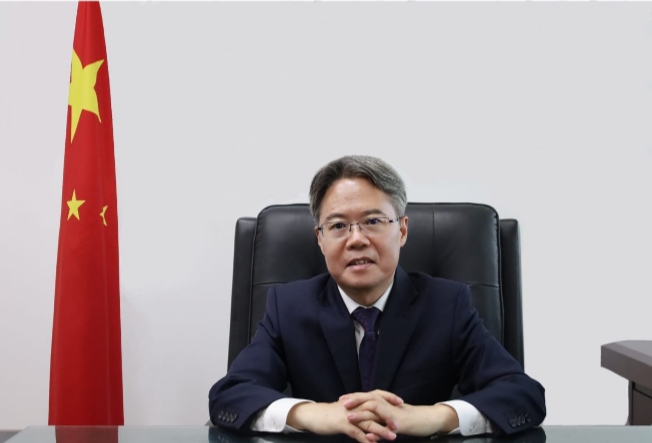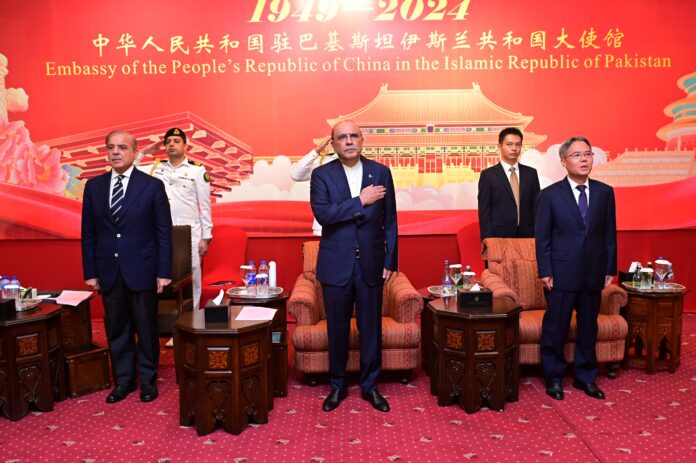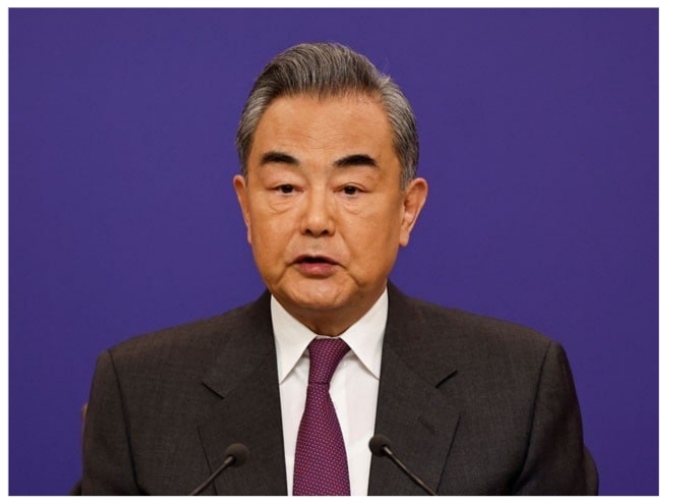AI technology contributes to China’s energy transition
Photo shows Goldwind’s Beijing Yizhuang Smart Park, the first-ever carbon neutral smart industrial park in China. (Photo provided by Goldwind)
By Li Zhen, Song Jiahang
Artificial intelligence (AI) technology is becoming an increasingly important contributor to energy transition.
Recently, State Power Rixin Technology Co., Ltd., a Chinese company specializing in data development and applications in the energy sector, released an independently developed new energy large model, which can help improve the efficiency of new energy generation and cope with extreme weather.
China Huadian Corporation, Jiutian Weather, and Huawei have jointly provided a new energy meteorological power prediction solution based on large AI models, which can enhance prediction accuracy and reduce operational costs of power plants.
Industry experts believe that as AI technology is more widely applied, its potential in accelerating clean energy transition will continue being unleashed.
Zhangjiakou in north China’s Hebei province is one of the regions in north China with the most abundant wind and solar energy resources. It is home to the Suola Wind Farm run by China Datang Corporation Ltd. (Datang).
The wind farm’s smart station utilizes an intelligent control and management system, allowing duty officers to have a whole picture of the wind farm’s substations and its corresponding equipment monitoring points through an integrated platform. They can monitor equipment status, personnel behavior, security environment, and other aspects in a full range.
The new energy stations of wind and solar farms, which are mostly scattered in remote areas, boast a wide variety of equipment and occupy vast land areas, which adds to the complexity of management.
Under traditional management models, on-site personnel are required to control and inspect equipment, which consumes a significant amount of manpower, resources, and money and has become a major obstacle to the development of new energy enterprises.
The introduction of AI technology, however, can reduce management costs and significantly improve the efficiency of station management.
“AI can help realize intelligent control of new energy generation equipment, intelligent image recognition, and accurate load forecasting, significantly reducing labor costs,” said an executive with Datang International Power Generation Co., Ltd.
AI technology can not only achieve real-time monitoring of energy supply, but also identify potential issues and make prompt adjustments by analyzing real-time data.
The executive said that large AI models can analyze massive data on equipment operation and historical faults to provide managers with early warnings of potential risks.
“For example, the fault model developed by an enterprise can detect signs of equipment degradation in advance and improve maintenance strategies based on the equipment life cycle. With a more precise maintenance plan, we can not only extend the equipment’s lifespan, but reduce the risk of power outages,” the executive explained.
AI technology is gradually seeping into different levels and details of management in the new energy sector. According to Song Jianjun, head of an artificial intelligence application research institute at Goldwind, a global leader in clean energy, energy conservation, and environmental protection, Goldwind has started applying AI technology in unmanned power plant construction, material allocation, translation, and other tasks.
“In the future, the company will continue investing in multi-modal large models, visual analysis, operations research, and other technological aspects to fully leverage AI technology for technical innovation and operational management in the new energy sector,” said Song.
The intermittent and fluctuating nature of renewable energy generation affects the quality of power generation and poses challenges to grid dispatch. AI technology can help integrate multidimensional data and predict fluctuations in new energy power, thus better matching supply and demand.
The ability of AI to recognize patterns and improve processes from massive data sets makes it an important technological choice for driving the development of emerging energy dispatch modes.
At the International Digital Energy Expo 2024 held in Shenzhen, south China’s Guangdong province, a cloud platform for the control and management of virtual power plants was unveiled by the city. This platform has connected 55,000 controllable load resources across 9 categories including charging piles, air conditioning systems of buildings, and photovoltaic systems, with a total capacity exceeding 3.1 million kilowatts.
As an emerging energy dispatch model, virtual power plants can gather and improve controllable load resources scattered among end-users, and are currently being explored for implementation in China. The application of AI will accelerate the popularization and utilization of distributed renewable energy devices, thereby better supporting the energy transition.
Industry insiders said that AI can enable more efficient energy storage and management, leading to innovative products such as smart wind turbines, unmanned power stations, and new energy big data platforms. In addition, it can also help improve resource allocation and configuration, fostering new models like virtual power plants, carbon trading, and spare parts platform trading.
Currently, the application of AI is predominantly focused on the enterprise sector. In the future, the increasingly diverse application scenarios of new energy will further drive the demand for AI in the new energy sector, thereby fully unlocking the potential of AI and benefiting a wider range of user groups.




